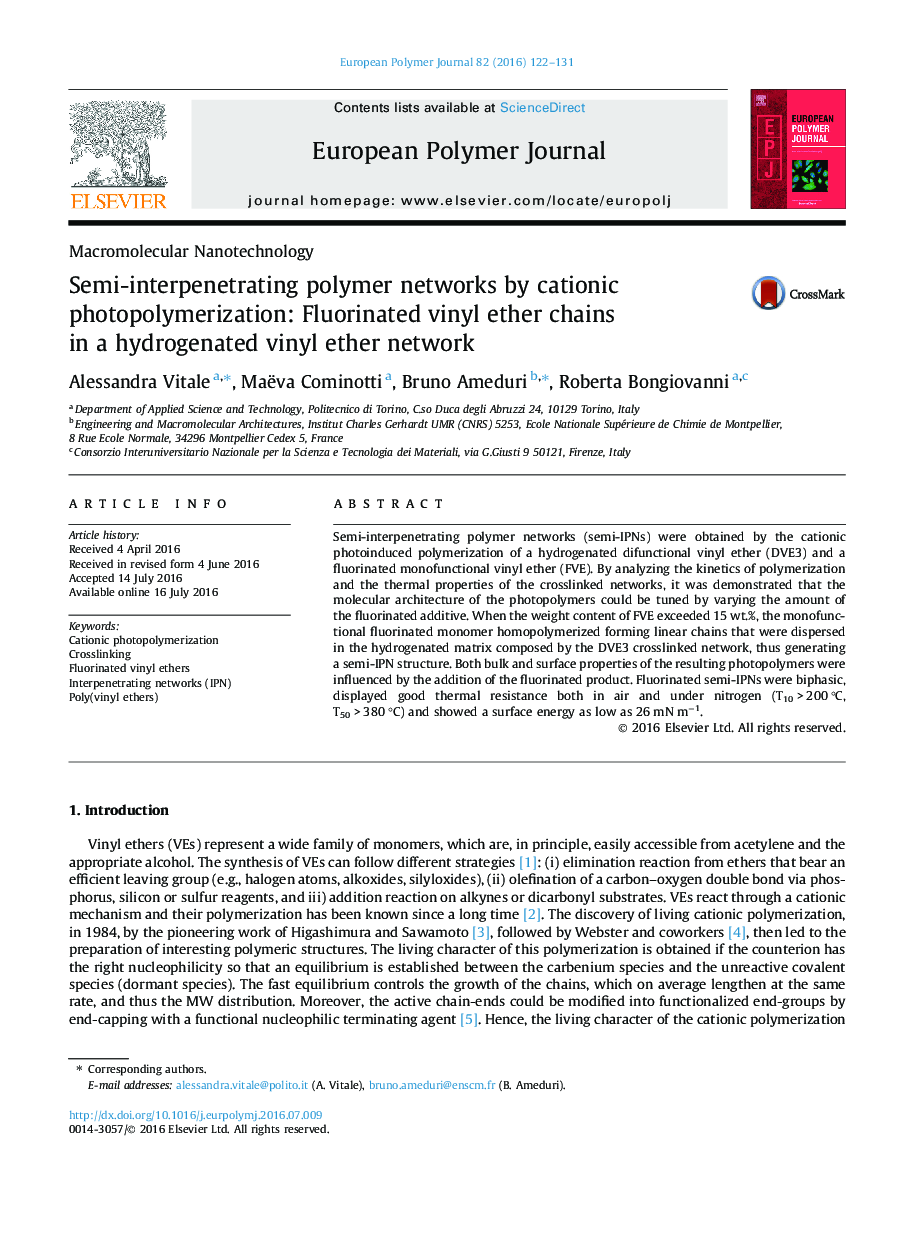| Article ID | Journal | Published Year | Pages | File Type |
|---|---|---|---|---|
| 1399131 | European Polymer Journal | 2016 | 10 Pages |
•Semi-interpenetrating polymer networks were obtained by the cationic photoinduced polymerization of a hydrogenated difunctional vinyl ether (VE) and a fluorinated VE (FVE).•The amount of FVE could tune the architecture of the photopolymers.•When the wt. content of FVE exceeded 15 wt.%, a semi-IPN structure was obtained.•Fluorinated semi-IPNs displayed good thermal resistance and good surface energy.
Semi-interpenetrating polymer networks (semi-IPNs) were obtained by the cationic photoinduced polymerization of a hydrogenated difunctional vinyl ether (DVE3) and a fluorinated monofunctional vinyl ether (FVE). By analyzing the kinetics of polymerization and the thermal properties of the crosslinked networks, it was demonstrated that the molecular architecture of the photopolymers could be tuned by varying the amount of the fluorinated additive. When the weight content of FVE exceeded 15 wt.%, the monofunctional fluorinated monomer homopolymerized forming linear chains that were dispersed in the hydrogenated matrix composed by the DVE3 crosslinked network, thus generating a semi-IPN structure. Both bulk and surface properties of the resulting photopolymers were influenced by the addition of the fluorinated product. Fluorinated semi-IPNs were biphasic, displayed good thermal resistance both in air and under nitrogen (T10 > 200 °C, T50 > 380 °C) and showed a surface energy as low as 26 mN m−1.
Graphical abstractFigure optionsDownload full-size imageDownload as PowerPoint slide
